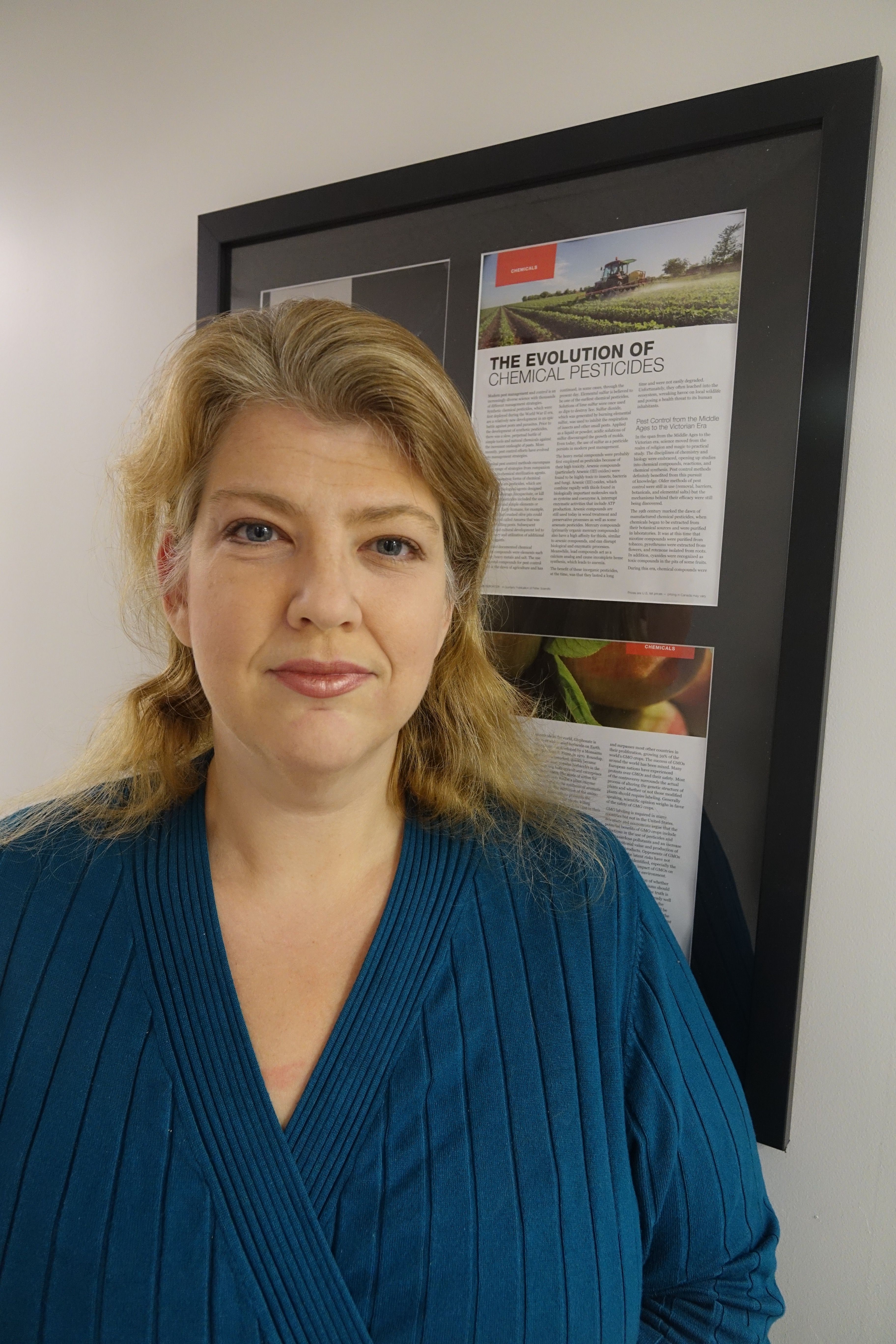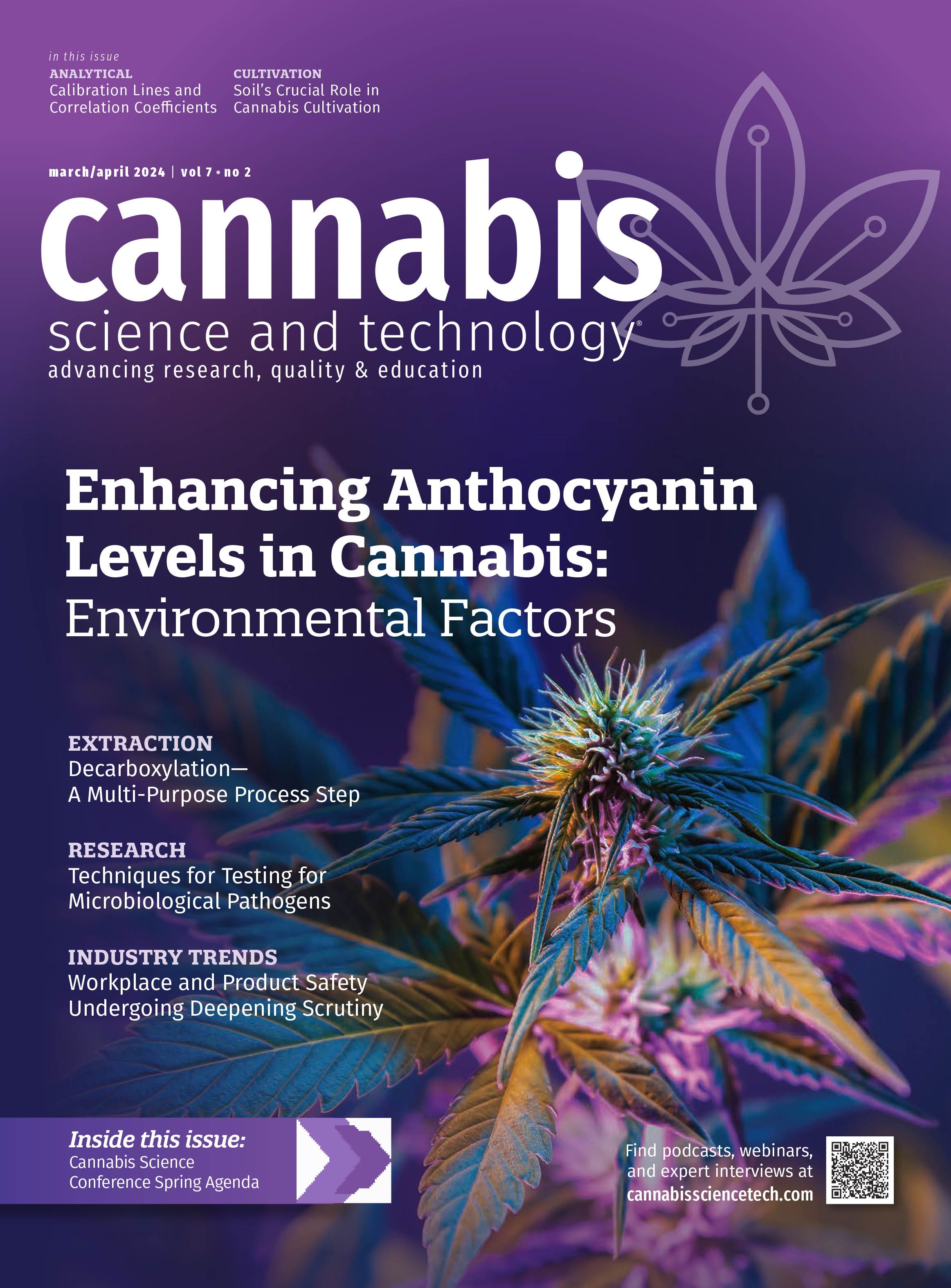Measuring Microbiology, Part III: Techniques for Testing for Microbiological Pathogens
In the latest installment of this series, Atkins examines techniques utilized for testing microbiological pathogens, along with the role and mechanisms of cell culture techniques including its strong points and limitations for testing cannabis products.
Many countries and industries have specific requirements for biological contamination that can impact human health, such as microorganisms. There are numerous ways to detect microorganisms in agriculture products, but the most common methods for pathogen detection include cell culture. This column examines the role and mechanisms of cell culture techniques including its strong points and limitations for testing cannabis products.
Cannabis plants can play host to a wide variety of microbial organisms. Some organisms are detrimental to the plants such as parasitic viruses and molds (tobacco mosaic virus [TMV] or hop latent viroid [HLVd]). Other organisms can damage and degrade the cannabis products themselves such as yeasts or molds. The last grouping of organisms can be dangerous to human health as pathogens such as some Salmonella and Aspergillus species.
There are two ways in which microbiological organisms can endanger human health. The first method is acute or active infections that cause damage to cells and tissues and produce immune responses. The second method of infection is the exposure to toxins that are produced by the microorganisms such as mycotoxins from species like Aspergillus, Fusarium, and Penicillium. These toxics can persist long after the actual living organism has perished. The International Commission on Microbiological Specifications for Foods (ICMSF) recognizes designation of microbiological hazard based on the effect on a product or human health (see Table 1).

Culture Media
One of the most common methods for microbiological detection is by culture techniques. Microorganisms are grown on a suitable medium under controlled laboratory conditions to create colonies which can then be identified and in some cases counted. Culture media can be grouped into categories by consistency, composition, and application (see Figure 1).
The first way to look at the types of media is by their consistency or physical state. There are three basic consistencies for media that include liquid, semisolid, or solid media.

Liquid media or broths are nutrient mixtures that do not contain agar. Agar is a gelatin-like compound derived from some red algae that contains polysaccharides. The agar acts as a solidification agent. Liquid media allow for growth of a large number of microorganisms and can be a step in a culturing process. A simple broth contains components such as peptone, beef extract, yeast extract, and sodium chloride. Peptone is a complex protein mixture of amino acids and polypeptides. Peptones are produced through protein hydrolysis from either plant or animal proteins. Various methods of hydrolysis from acid to enzymes to break apart the protein into polypeptides and amino acids. These compounds provide the nutrition needed for most of the microorganisms to grow in addition to the beef or yeast extract. Elemental salts like sodium chloride allow for preservation of osmotic balance in the media. These components are mixed together with water to provide a liquid broth. Examples of liquid broth media are the basic nutrient broth, Tryptic soy broth, MR-VP broth, and phenol red carbohydrate broth.
Semi-solid media are a similar composition as to liquid broths that also contain a small amount of agar (<0.5%).Semi-solid media are used with microaerophilic bacteria (require lower levels of dioxygen for growth such as Campylobacter species) or for determining bacterial motility. Examples of semi-solid media are motility media, Stuart’s and Amies media, Hugh and Leifson’s oxidation fermentation medium, and Mannitol motility media.
Solid media contains 1-2% agar and creates a solid substrate for colony growth. Types of solid media include blood agar, MacConkey agar, chocolate agar, and nutrient agar. Each type of media has a different combination of components which are often preferential for specific types of organisms or applications.

Solid media used in primarily three types of containers: an agar deep well tube, an agar slant tube, and an agar plate (see Figure 2). Deep agar tubes are used for different types of specialized metabolic tests while agar slants are commonly used to store samples long term or create stocks of microorganisms. Plates are most often used to separate species of microorganisms and observe colony characteristics.
Media can be classified by their composition in addition to their consistency. Two basic divisions of composition are synthetic (defined) or non-synthetic (complex or rich) media. Synthetic media are well characterized formulations of materials that are pure inorganic and/or organic compounds where the formulation varies only slightly. An example of this type would be peptone water. These types of media are used often for specific types of work such as autotroph enrichment or vitamin assays.
Non-synthetic media are complex formulations and contain ingredients or components not specifically or precisely defined (such as plant extracts) and can have a wide range of variability. Examples can include milk agar, blood agar, or yeast extracts.
Application and Media Choices
A final way in which to classify the broad types of culture media is by use and application. The simplest type of media is general purpose, basal, or basic media meant to keep a wide range of microorganisms alive such as a basic nutrient agar or a peptone water medium. This type of media is often used to subculture organisms without an enrichment source. It is a non-selective medium which can grow colonies of microorganisms such as Staphylococcus and Enterobacteriaceae.
If additional nutrient components such as blood, egg, or serum are added to aid in microorganisms’ growth, then media is called an enriched media. These types of media allow for growth of particular types of organisms while inhibiting the growth of other types of organisms which require other nutrients. Examples of enriched media include blood agar, chocolate agar, and Lowenstein Jensen media.

- Enrichment media is a liquid medium that allows the growth of desired microorganisms in a selective media that prohibits the growth of undesirable organisms. This type of media is used from isolation of microorganisms from complex matrices such as microorganisms such as Salmonella species from soil or fecal samples.
- Differential or indicator media display a visible change to the media in the presence of a microorganism that activates an indicator such as phenol red, or methylene blue. Differential media can also cause different colonies to grow with different colors or morphologies to distinguish them on the same plate. Blood agar is used to differentiate between hemolytic and non-hemolytic species, for example.
- Transport and storage media are substrates meant for the maintenance, transportation, and storage of organisms. Transportation mediums are meant to be short term or temporary storage while
storage medium is meant for longer-term storage. - The most diverse group of media are the selective media. These media are preferential for specific types of microorganisms and inhibit the growth of other possible unwanted microbes. These media contain a variety of additional additives such as salts, drugs, antibiotics, dyes, or pH modifiers to create a suitable environment for the target organism while inhibiting competing growth. Many organisms can be cultured in a multitude of different media to produce different resulting morphologies that can then be used for identification (see Figures 3, 4, 5).

In order to obtain colonies, several methods of culturing are commonly used to plant organisms. The first technique is the pour technique where the biological sample or inoculum is diluted and mixed with a liquified agar and poured onto a sterile culture plate. Another method is to pipette the microorganisms into the plate and pour over the agar solution. The colonies will appear throughout the medium and can be used to estimate viability counts. The second method is a spread technique, which is similar to the pour technique, but the agar base is already in the plate and the sample is spread onto the surface of the plate. In this technique, the colonies will grow on the surface of the plate. The final method is streak plating or isolation streaking in which sample aliquots are applied to the agar substrate in streaks or lines in each quadrant in an attempt to separate colonies of organisms. This method of plating separates possible competing organisms into different areas of the plate (see Figure 6).

After the plates are inoculated, the plates are incubated at set temperatures for many hours or days, depending on the organisms, to allow for colony growth (see Table 2). The resulting colonies are then characterized by color and morphology. Surface colonies can be examined for form, elevation, colony growth margin, surface characteristics, and texture while colonies within the medium can be harder to distinguish for all the morphological characteristics. The colonies can then be evaluated quantitatively (enumeration) using a variety of different methods including turbidity, microscopic examination, and cell counts.

Turbidity methods are used in liquid media and result in a calculation between the changes in the sample cell numbers and the opacity of the media. Standard optical density or turbidimetric curves are used to calculate the number of microbial cells present in the media using a turbidimeter or spectrophotometer. A second method of quantitation is the use of plate counts. For plate counts, viable cells are diluted into aliquots and deposited on the plates for colony growth. After incubation, the cells are calculated from factors such as number of viable cells, amount of the dilution and size of the aliquots. The number of cells is reported as colony-forming units or CFUs. Plates with colonies greater than about 30 colonies but less than 300 colonies have the highest accuracy.
Several microbiological supply manufacturers have developed selective media products and systems which simplify culture and plating processes, in addition to increasing accuracy and improving ease of use. These products include thin film culture media and plates with designated wells for samples and grided plates for ease in plate counting.
Culturing microbiological organisms is a traditional detection technique in use for hundreds of years. There are many organisms which response positively to culture which can be both a positive and negative aspect to traditional culture. Culture techniques can be prone to cross contamination and depend on cell viability. Some organisms, such as species of Aspergillus, can be difficult to culture or be prone to inadvertent exposure due to the ubiquitous natures of some microorganisms. As technology turns more and more to automated processes and more robust DNA/RNA techniques culturing becomes more of a screening technique in many cases to target additional testing.
Final Thoughts
Microbial culture and plating techniques have been a traditional method for determining the presence of microbial organisms for many years. There are many reasons for and against the use of microbial cultures in the cannabis industry from the cost per test to the number of preparation and testing steps. These techniques can be influenced and altered by cross contamination or additional microorganisms in the biome of the sample. There is also a certain artform to culturing successfully for particular species. In many cases these cultures are a good screening tool for large sample environments, but often suffer at the hands of high throughput or time sensitive sample testing processes.
About The Columnist

Patricia Atkins is a Senior Applications Scientist with Spex, an Antylia Scientific company and has been a member of many cannabis advisory committees and working groups for cannabis including NACRW, AOAC and ASTM.
How to Cite this Article
Atkins, P., Measuring Microbiology, Part III: Techniques for Testing for Microbiological Pathogens, Cannabis Science and Technology, 2024, 7(2), 8-11.
